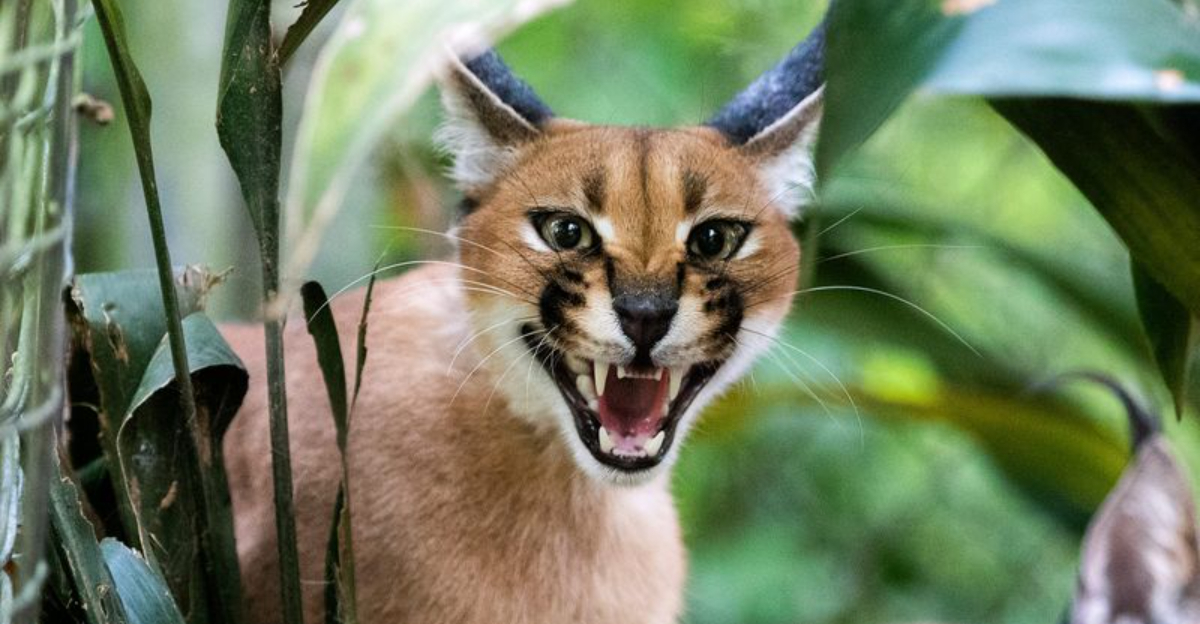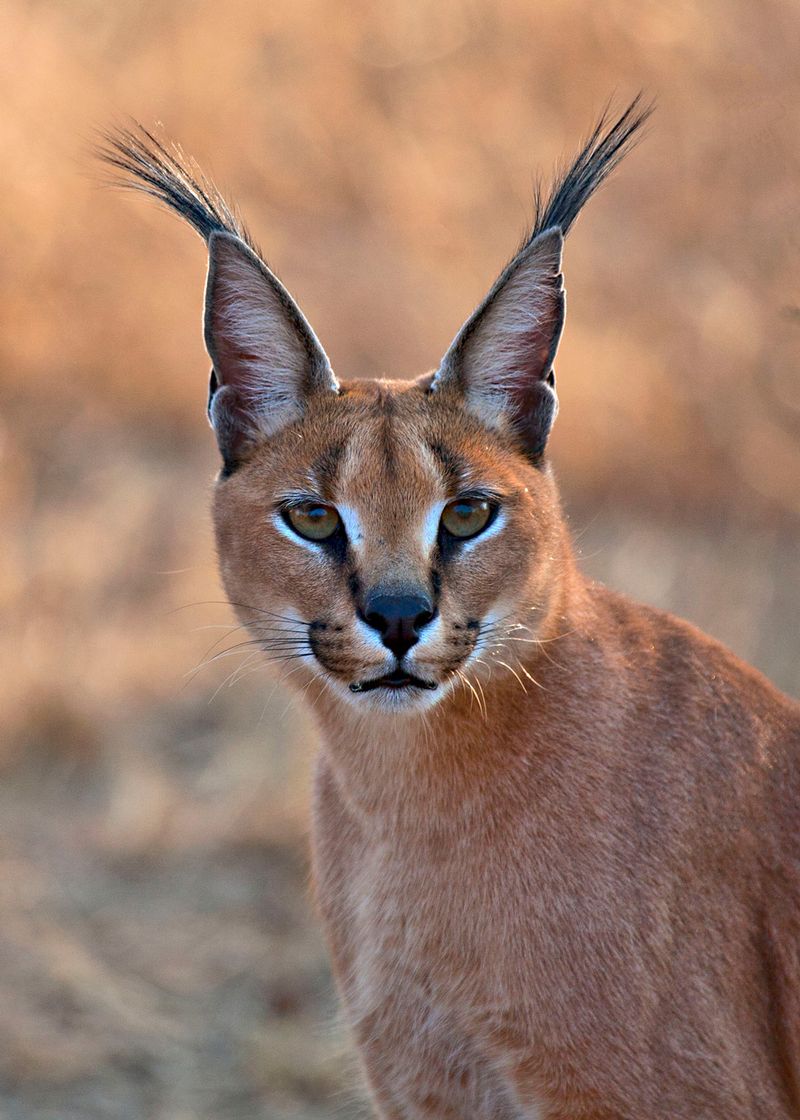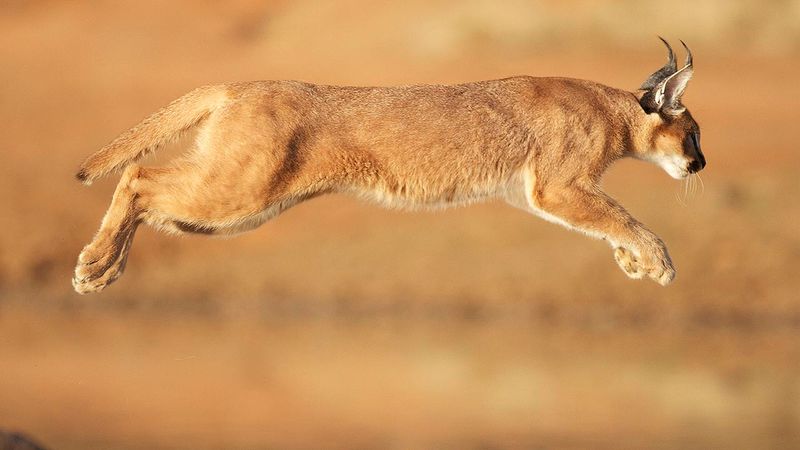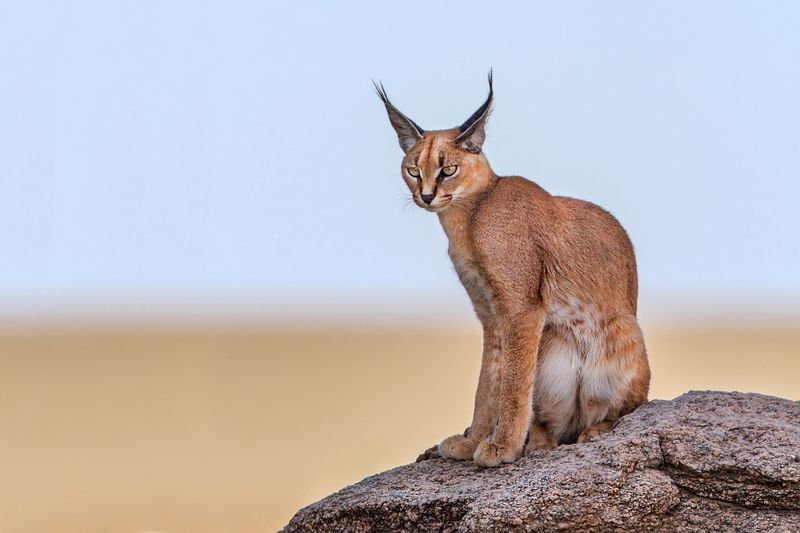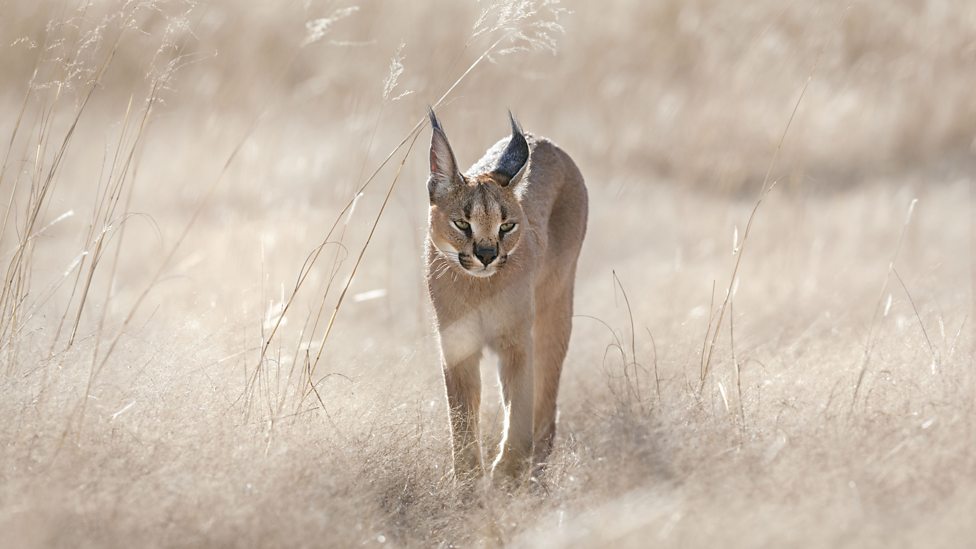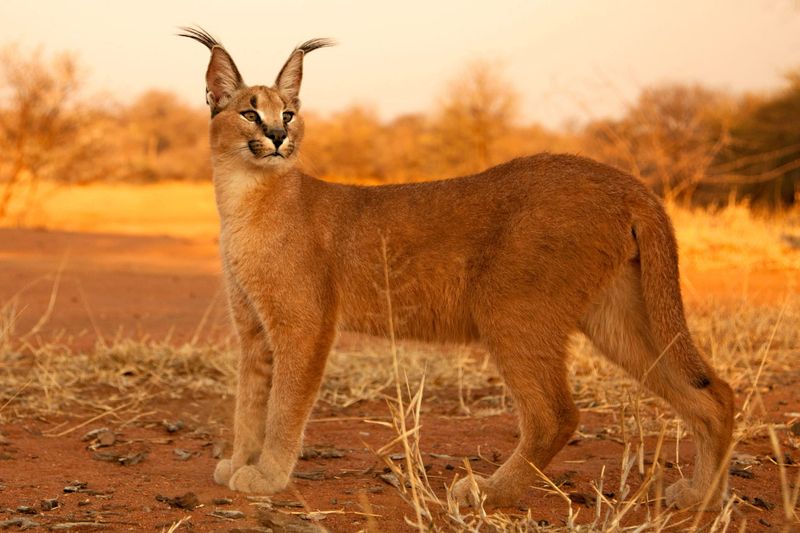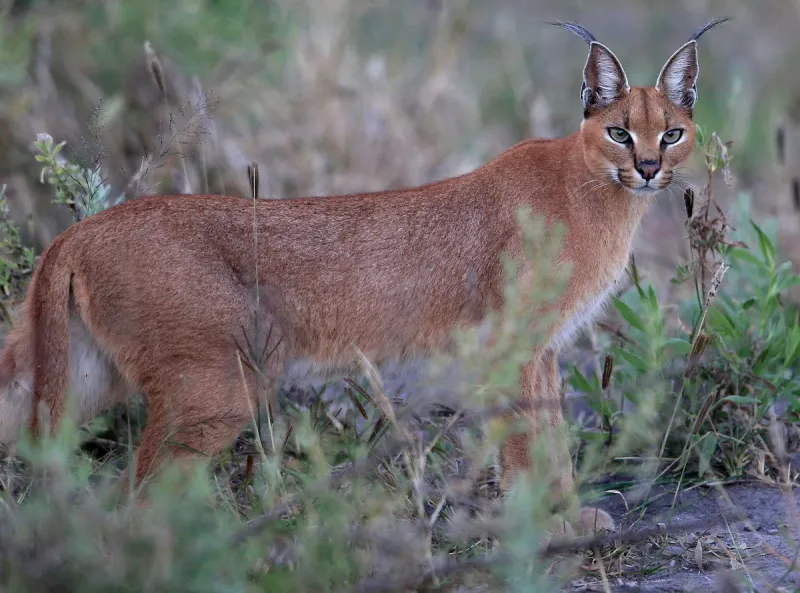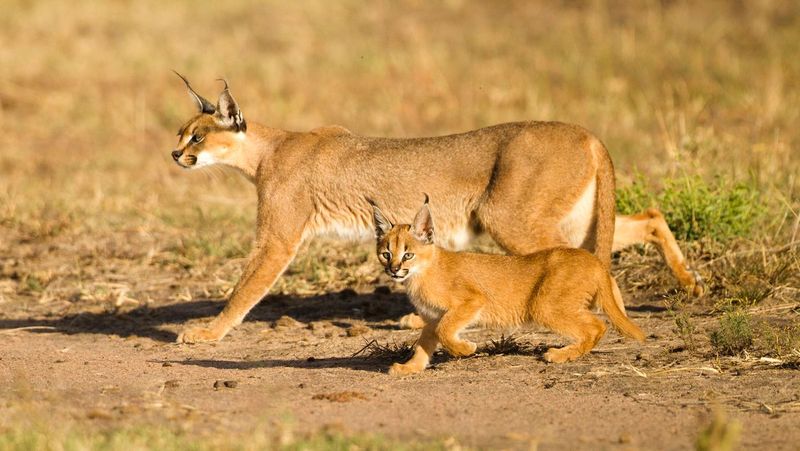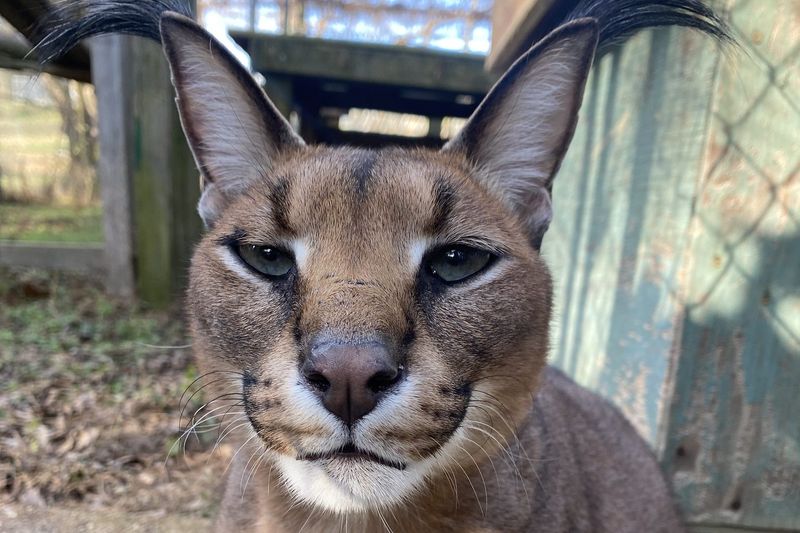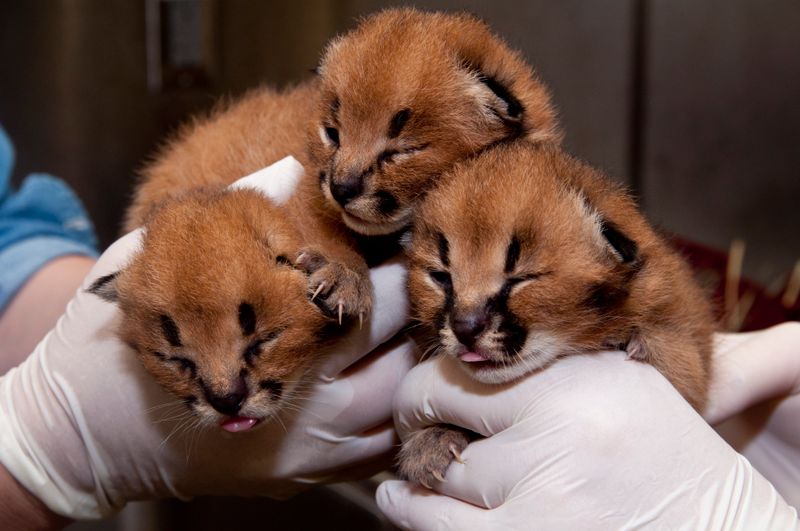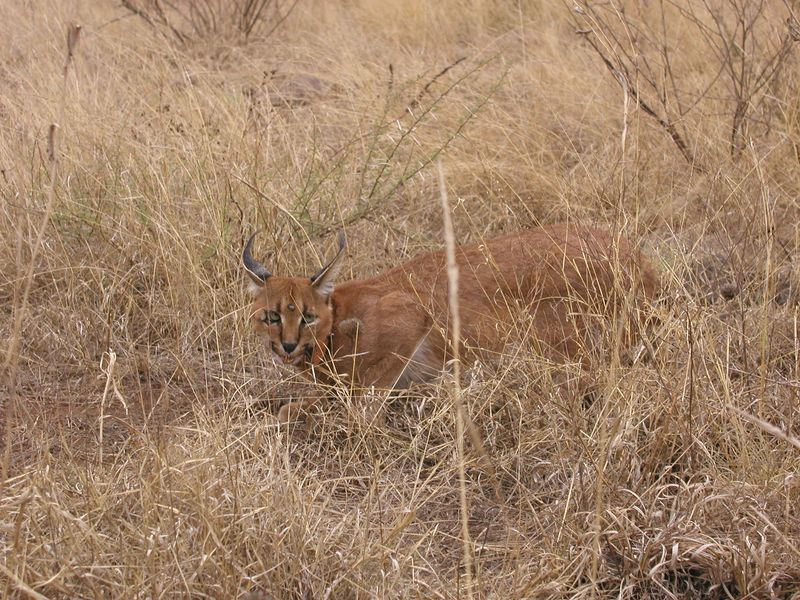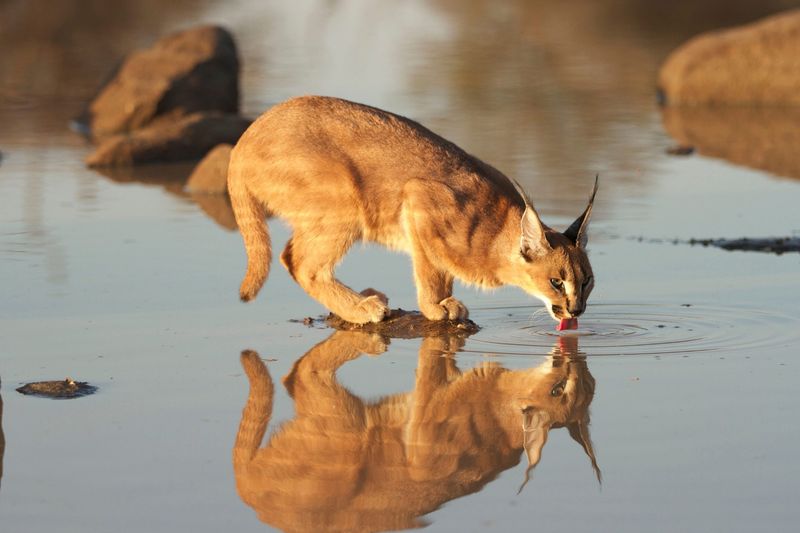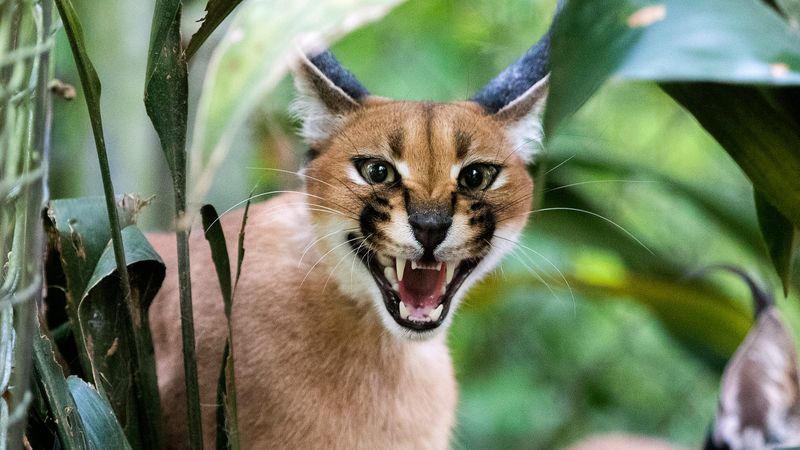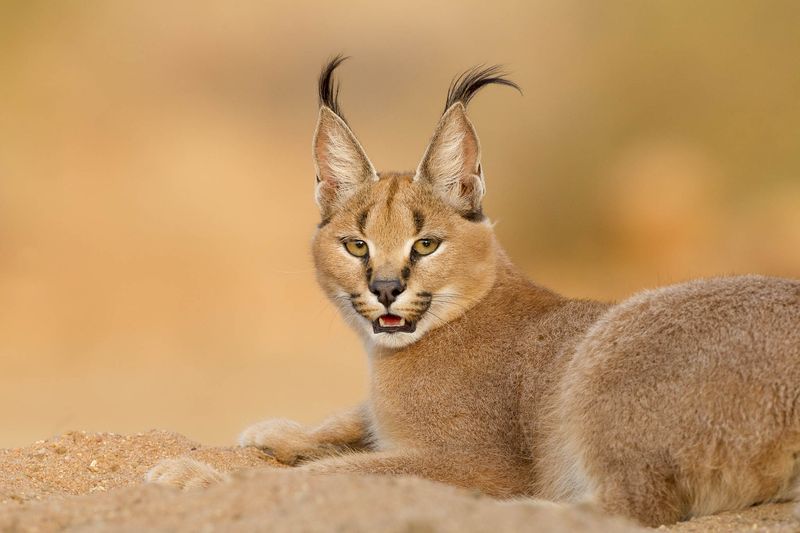📖 Table of Content:
- 1. They Have Super Sonic Ears
- 2. They Can Jump Insanely High
- 3. They Are Built for Speed
- 4. They Have the Most Majestic Ear Tufts
- 5. They’re Stealthy Hunters
- 6. They Can Live in Harsh Environments
- 7. They’re Surprisingly Strong for Their Size
- 8. They Can Take Down Prey Much Larger Than Themselves
- 9. They’re Incredibly Adaptable
- 10. They Have the Cutest Kittens
- 11. They’re Masters of Camouflage
- 12. They Can Survive Without Water for Long Periods
- 13. They’re Not Actually Lynxes
- 14. They Have a Playful Side
- 15. They’re Absolutely Stunning
Caracals are one of the most captivating wild cats, known for their sleek build and striking ear tufts. These medium-sized felines are both elegant and powerful, making them stand out in the animal kingdom. With their keen senses and remarkable athleticism, they are expert hunters capable of thriving in diverse environments. Their unique combination of beauty and strength has fascinated people for centuries.
Beyond their appearance, caracals possess extraordinary survival skills that make them true masters of the wild. They are highly adaptable, able to live in deserts, savannas, and even mountainous regions. Their ability to leap over 10 feet into the air to catch birds in mid-flight showcases their agility. Additionally, they are stealthy and incredibly fast, allowing them to outmaneuver prey and evade larger predators.
With so many incredible traits, it’s no wonder caracals have captured the hearts of wildlife enthusiasts around the world. Their playful nature, stunning golden eyes, and fierce yet graceful demeanor make them a favorite among big cat lovers. Whether you’re drawn to their mysterious behavior, hunting prowess, or sheer beauty, there’s no denying that caracals are among nature’s most extraordinary creatures. Here’s a closer look at why these wild cats are so beloved.
1. They Have Super Sonic Ears
Thanks to the 20-plus muscles in each ear that allow them to move independently, caracals can pinpoint even the faintest sounds, making them exceptional hunters. Unlike many other wild cats, they rely heavily on their acute hearing to detect prey hiding in tall grass or underground burrows. Scientists believe their ear tufts may play a role in communication, possibly signaling warnings or intentions to other caracals. Whether hunting at night or listening for distant threats, their hearing gives them a major advantage in the wild. Even in captivity, they react instantly to the smallest noise, proving just how fine-tuned their auditory senses are. With ears designed for precision, caracals thrive in challenging environments where sound is their greatest tool.
2. They Can Jump Insanely High
Leaping is one of the most impressive skills caracals possess, and they use it to their full advantage. These athletic cats can jump over 10 feet straight into the air, allowing them to catch birds in mid-flight. Unlike other felines that rely solely on stalking and chasing, caracals use their powerful hind legs to launch themselves with extreme force. Their long limbs provide incredible propulsion, enabling them to snatch prey that would otherwise be out of reach. This skill is especially useful in open landscapes where flying animals make up a significant part of their diet. Even when not hunting, they are known to leap playfully, showcasing their natural agility. Watching a caracal in action makes it clear why they are often called the acrobats of the wild.
3. They Are Built for Speed
Speed is another weapon in a caracal’s survival toolkit, allowing them to chase down quick-moving prey. With their slender yet muscular bodies, they can reach speeds of up to 50 miles per hour, rivaling some of the fastest land animals. Their long legs and flexible spine enable rapid acceleration, making them incredibly efficient predators. While many cats rely on stealth and ambush, caracals combine both strategy and speed to ensure a successful hunt. This quickness also helps them escape larger predators, such as leopards and hyenas, who might see them as a meal. Unlike big cats that tire quickly, caracals can sustain their bursts of speed long enough to make a catch. Whether hunting or fleeing, their swiftness makes them one of nature’s most efficient hunters.
4. They Have the Most Majestic Ear Tufts
Tufted ears are a signature feature of caracals, setting them apart from other wild cats. These long, black-tipped tufts can grow up to two inches and add to their striking appearance. Some researchers believe the tufts help with communication, acting as visual signals between caracals. Others suggest they play a role in camouflage, breaking up the outline of their heads and helping them blend into tall grass. Regardless of their exact function, there is no denying that these ear tufts make caracals look both elegant and fierce. Many people compare their appearance to mythical creatures because of their almost regal presence. Whether in the wild or in photos, their ear tufts make them one of the most distinctive felines on the planet.
5. They’re Stealthy Hunters
Hunting is second nature to caracals, who rely on their stealth and patience to catch their next meal. They move through their environment with almost complete silence, using their padded paws to creep up on prey. Their ability to blend into their surroundings allows them to get dangerously close before making their move. Unlike some cats that chase their food for long distances, caracals prefer short, explosive attacks. Their ambush tactics often leave prey with no chance to escape, ensuring a successful hunt. Even when leaping to catch birds, they do so with almost no wasted motion, making their attacks precise and efficient. This incredible hunting ability has allowed them to survive in regions where food can be scarce.
6. They Can Live in Harsh Environments
Adaptability is one of the greatest strengths of the caracal, allowing it to survive in extreme conditions. These cats are found in a variety of habitats, including deserts, savannas, and rocky mountains. Unlike many animals that struggle with temperature changes, caracals thrive in both hot and cold climates. Their short, dense fur helps regulate body temperature, while their ability to go long periods without water makes them desert survivors. Many predators rely on specific habitats to hunt, but caracals can adjust their diet based on their surroundings. Whether living in arid regions or lush grasslands, they always find a way to blend in and hunt efficiently. This flexibility makes them one of the most widespread wild cat species in Africa and parts of Asia.
7. They’re Surprisingly Strong for Their Size
Strength is a defining trait of caracals, despite their relatively small size compared to big cats. Weighing between 30 and 40 pounds, they are incredibly muscular, especially in their hind legs. This power allows them to leap great distances and take down prey much larger than themselves. Their sharp claws and strong jaws make them formidable hunters capable of handling animals like antelopes. Even in confrontations with other predators, caracals often hold their ground rather than fleeing. Their confidence and resilience make them one of the most fearsome small wild cats. For an animal that looks so sleek, their hidden strength is truly remarkable.
8. They Can Take Down Prey Much Larger Than Themselves
Hunting big prey is no challenge for caracals, who use their agility and strength to overpower animals twice their size. Unlike smaller wild cats that stick to rodents and birds, caracals have been known to take down antelope and young deer. Their powerful bite and sharp claws allow them to subdue larger animals with surprising efficiency. By targeting the throat or spine, they can quickly disable prey before it has a chance to fight back. This skill is particularly useful in dry regions where food sources vary, allowing caracals to take advantage of whatever is available. Even when hunting smaller animals, they display the same precision and power. Their ability to tackle such a wide range of prey makes them one of the most versatile wild cats.
9. They’re Incredibly Adaptable
Flexibility is key to a caracal’s survival, and these cats have mastered the art of adaptation. Whether in the wild or near human settlements, they adjust their behaviors to suit their surroundings. Unlike some big cats that struggle with habitat loss, caracals have learned to coexist with changing landscapes. They are known to hunt in agricultural areas, taking advantage of rodents and other pests. In some regions, they have even been spotted near cities, though they remain elusive. This ability to live in different environments has helped them avoid endangerment. Their resourcefulness ensures they will continue thriving despite human expansion.
10. They Have the Cutest Kittens
Baby caracals might be some of the most adorable wild cat kittens on the planet. Born with their signature ear tufts, they already have a fierce yet playful look from day one. Their fur is softer and fluffier than adult caracals, and their striking blue eyes later change to golden hues. As they grow, they develop the same agility and athleticism seen in their parents, practicing their hunting skills through play. Unlike some wild cats that mature quickly, young caracals stay with their mothers for several months, learning essential survival skills. Their playful and curious nature makes them incredibly entertaining to watch. Even as adults, they maintain a level of mischief that makes them endlessly charming.
11. They’re Masters of Camouflage
Blending into the environment is a survival skill that caracals have perfected. Their reddish-brown fur helps them disappear into dry grasslands, deserts, and rocky landscapes, making them nearly invisible to both prey and predators. Unlike spotted or striped cats, their solid coat provides a natural disguise that allows them to move undetected. When hunting, they remain completely still for long periods, using their surroundings to mask their presence. This skill is especially useful when ambushing prey, as they can creep forward undetected before launching a powerful attack. Even in areas with limited cover, caracals use shadows and terrain to their advantage. Their incredible ability to vanish in plain sight is one of the reasons they are such effective hunters.
12. They Can Survive Without Water for Long Periods
Water scarcity is not a problem for caracals, as they have adapted to survive in some of the driest regions on Earth. Instead of relying on rivers or waterholes, they get most of their hydration from the animals they eat. This means they can go for extended periods without drinking, a crucial advantage in deserts and arid landscapes. Their kidneys are highly efficient at filtering water, reducing the need for frequent hydration. Many predators struggle in dry conditions, but caracals thrive by conserving moisture and seeking prey with high water content. Even when water is available, they often drink less frequently than other cats of similar size. This ability allows them to live in regions where other carnivores would struggle to survive.
13. They’re Not Actually Lynxes
Despite their nickname as “desert lynxes,” caracals are not part of the lynx family. While they share some similarities, such as tufted ears and a short tail, they actually belong to their own unique genus, Caracal. Unlike lynxes, which are typically found in colder regions and have thicker fur, caracals are built for warmer climates. Their bodies are more slender, their legs are longer, and they rely on speed rather than endurance. This distinction makes them one of the most fascinating felines, as they represent a completely different evolutionary path. Many people mistake them for lynxes, but caracals are truly in a category of their own. Their uniqueness only adds to their appeal as one of nature’s most remarkable cats.
14. They Have a Playful Side
Even though caracals are fierce hunters, they have a fun-loving and mischievous nature. In the wild, young caracals playfully chase each other, practicing their hunting skills in a safe environment. Their playful behavior isn’t just limited to kittens—adults have also been seen engaging in pouncing games, leaping for fun, and rolling around in the grass. This side of them is especially evident in captivity, where they interact with toys and even play games with their caretakers. Their high intelligence makes them curious about their surroundings, leading them to investigate and explore their environment in creative ways. Watching them play reveals a softer, more affectionate side to these otherwise independent felines. Their blend of ferocity and playfulness makes them even more endearing.
15. They’re Absolutely Stunning
Few wild cats are as visually striking as the caracal, with their golden eyes, sleek fur, and signature black ear tufts. Their sharp facial markings and muscular frame give them an intense and majestic look. Whether stalking prey in the wild or lounging gracefully, they carry themselves with confidence and elegance. Their piercing gaze adds to their aura of mystery, making them one of the most photogenic wild cats. Unlike some felines that appear bulky or rugged, caracals have a refined, almost regal presence. Their beauty has made them a favorite subject for wildlife photographers and animal lovers alike. With their stunning appearance and captivating features, it’s no wonder they have captured the hearts of so many.
